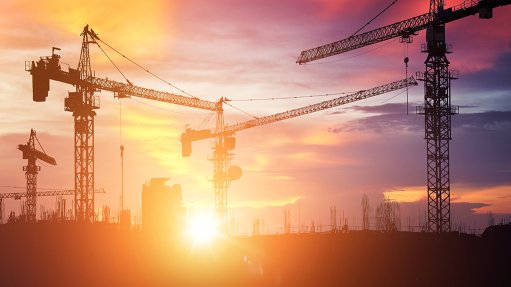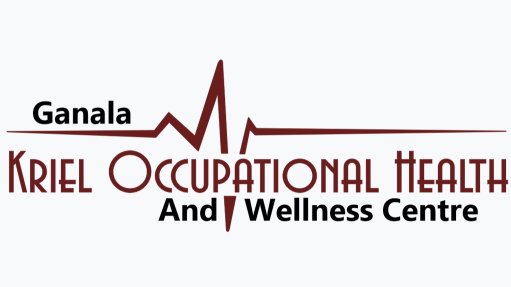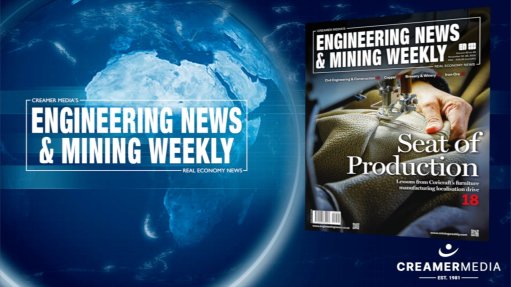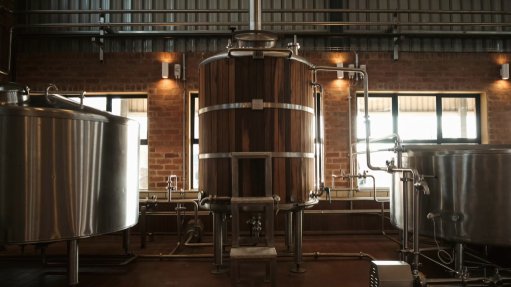Key issues in welding stainless steels
Most stainless steels have good weldability if some key issues are understood and addressed, correct procedures are followed and expert advice is obtained if the organisation is inexperienced, says gases and welding products supplier Afrox manufacturing industries team applications development manager Arnold Meyer.
Speaking during a webinar hosted by Creamer Media on the Essentials of Stainless Steel, held on August 26, Meyer focused on three key issues in welding 304L and 316L austenitic stainless steel and 2205 duplex stainless steel.
Solidification cracking (or hot cracking) in the weld metal upon solidification can be experienced when welding stainless steel grades 304L and 316L .
Should this occur, the solution for 304L is to weld with 308L type electrodes and rods to ensure the composition of the weld metal will place it in the FA region of the Welding Research Council (WRC) 1992 diagram with and without dilution. For 316L, the solution is to weld with 316L type electrodes and rods with the composition of the weld metal in the FA region of the WRC 1992 diagram.
Pitting can also occur owing to carbon contamination from carbon steel when welding 304L and 316L . Meyer suggests physically separating carbon steel and stainless steel welding operations.
This is in addition to using dedicated stainless steel wire brushes and carbide free abrasives – grinding and sanding discs.
Another key issue faced when welding 304L and 316L is discolouration and scaling owing to high temperature oxidation of chromium.
Meyer says to use HP Argon as backing gas for open roots, especially in pipe welding.
Good-quality welding electrodes and shielding gas to protect the weld metal is also recommended and the weld should be cleaned, pickled and passivated afterwards.
When welding 2205, getting the phase balance right in the weld metal – 40% to 60% ferrite, balance austenite, can be an issue.
The solutions is to weld with 2209 type electrodes and rods, as 2209 has increased nickel content to stabilise the austenite phase for rapid cooling during welding.
Further, the heat input needs to be controlled. A higher heat input requires more austenite, while a lower heat input requires more ferrite.
The use of long arcs or long contact-tip-to-work-distances should also be avoided, says Meyer, adding that nitrogen contamination will strongly promote austenite formation.
Stainless steel grade 2205 can also be subject to pitting, owing to carbon contamination from carbon steel, and discolouration and scaling, owing to the high temperature oxidation of chromium, and the solutions there for is the same as that of austenitic steels.
Article Enquiry
Email Article
Save Article
Feedback
To advertise email advertising@creamermedia.co.za or click here
Comments
Press Office
Announcements
What's On
Subscribe to improve your user experience...
Option 1 (equivalent of R125 a month):
Receive a weekly copy of Creamer Media's Engineering News & Mining Weekly magazine
(print copy for those in South Africa and e-magazine for those outside of South Africa)
Receive daily email newsletters
Access to full search results
Access archive of magazine back copies
Access to Projects in Progress
Access to ONE Research Report of your choice in PDF format
Option 2 (equivalent of R375 a month):
All benefits from Option 1
PLUS
Access to Creamer Media's Research Channel Africa for ALL Research Reports, in PDF format, on various industrial and mining sectors
including Electricity; Water; Energy Transition; Hydrogen; Roads, Rail and Ports; Coal; Gold; Platinum; Battery Metals; etc.
Already a subscriber?
Forgotten your password?
Receive weekly copy of Creamer Media's Engineering News & Mining Weekly magazine (print copy for those in South Africa and e-magazine for those outside of South Africa)
➕
Recieve daily email newsletters
➕
Access to full search results
➕
Access archive of magazine back copies
➕
Access to Projects in Progress
➕
Access to ONE Research Report of your choice in PDF format
RESEARCH CHANNEL AFRICA
R4500 (equivalent of R375 a month)
SUBSCRIBEAll benefits from Option 1
➕
Access to Creamer Media's Research Channel Africa for ALL Research Reports on various industrial and mining sectors, in PDF format, including on:
Electricity
➕
Water
➕
Energy Transition
➕
Hydrogen
➕
Roads, Rail and Ports
➕
Coal
➕
Gold
➕
Platinum
➕
Battery Metals
➕
etc.
Receive all benefits from Option 1 or Option 2 delivered to numerous people at your company
➕
Multiple User names and Passwords for simultaneous log-ins
➕
Intranet integration access to all in your organisation


















